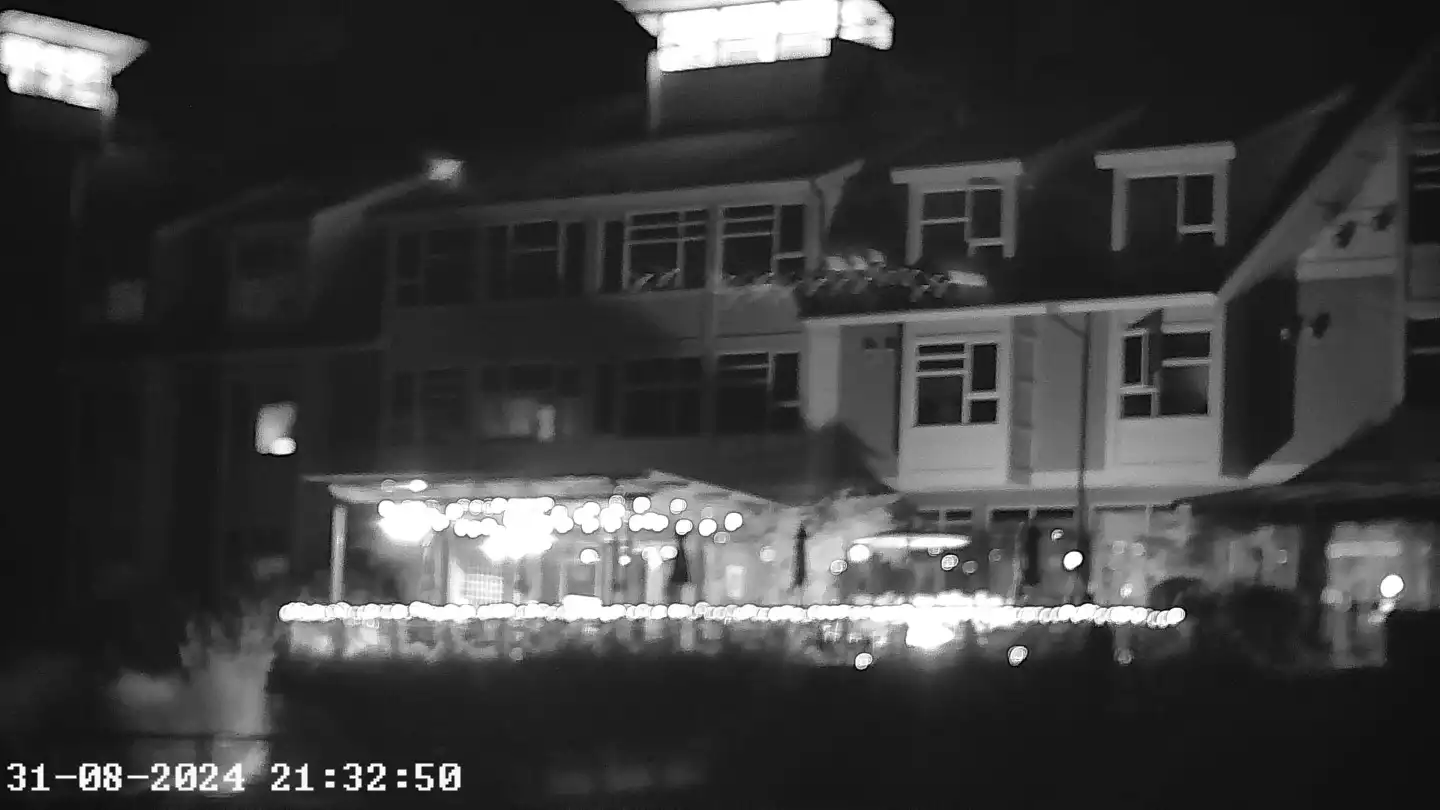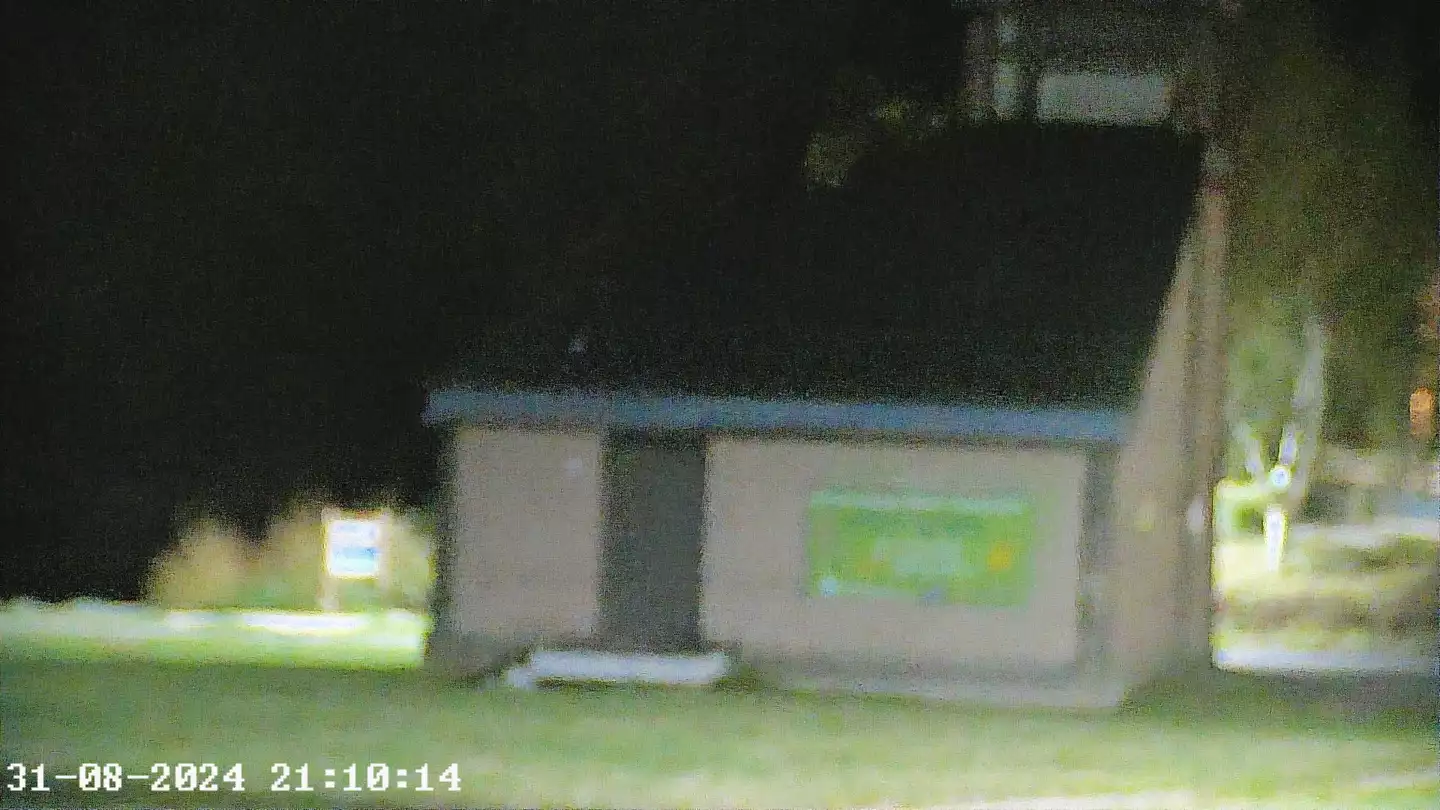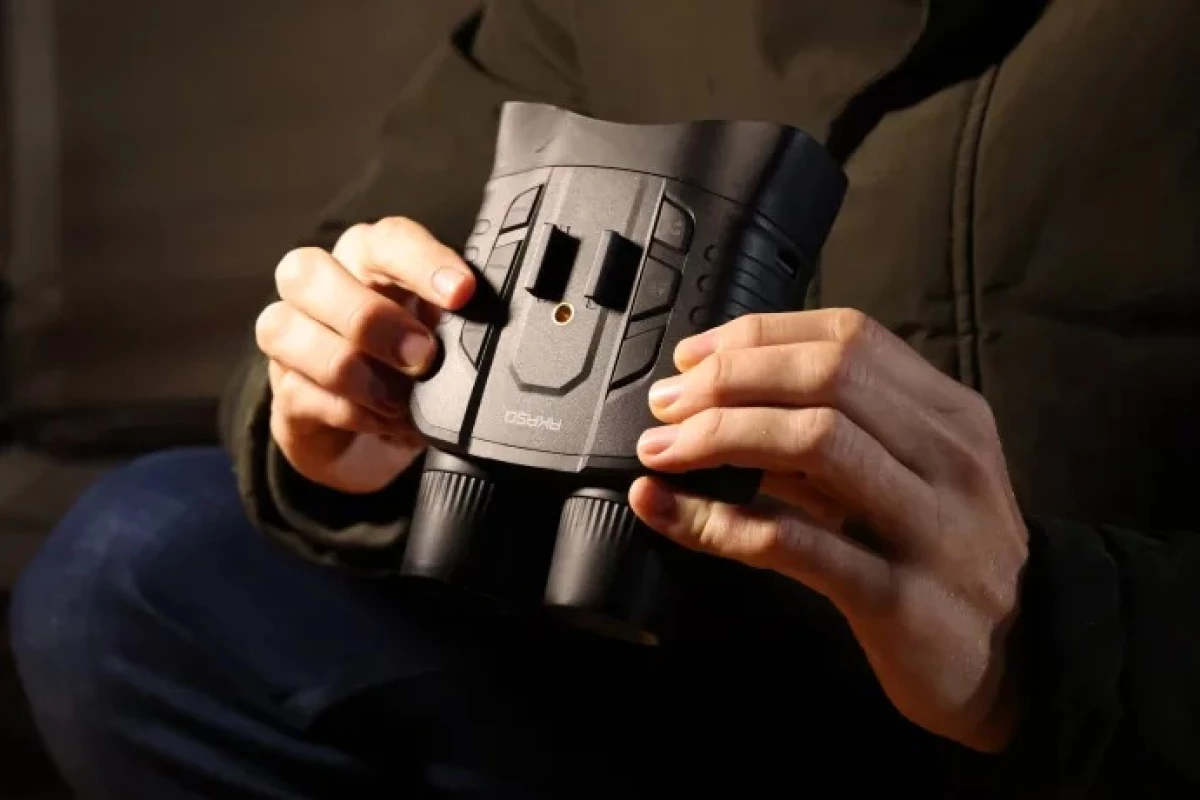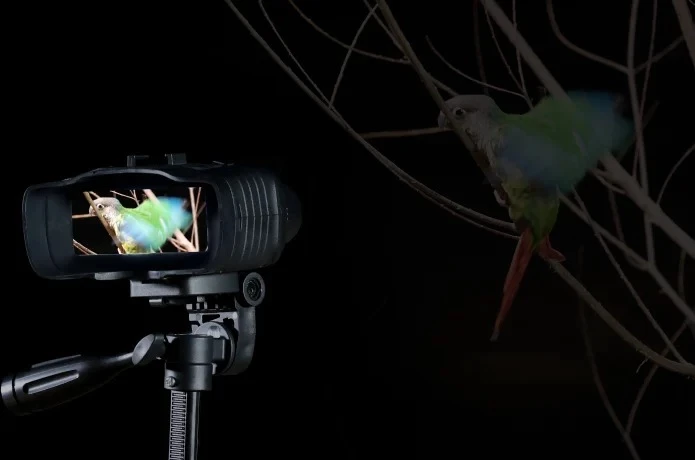Akaso's Seemor 200 night-vision scope uses AI to blur the dividing line between color day imaging and infrared black-and-white night imaging. We waited for sundown and put one through its paces. Here's what we found.
Night vision-scopes have both advanced in technology and dropped in price in recent years. In 2021, a battery-gobbling monocular with a tiny screen and not-very-good infrared optics cost half as much more as a widescreen 4K system does today. Of course, quality can vary from example to example, with some bargains that really aren't bargains at all and die within days of purchase, so it's always a good idea to do your homework.
At first glance, Seemor 200 looks like many other widescreen 'binocular' types on the market, but taking it out of the box demonstrated that it has a decent heft at 500 g (18 oz) and a rugged build. This is a pleasant change from similar scopes that are light plastic shells with very little inside them – and rattle. The unpacking revealed that the unit comes with a hard case, two rechargeable battery packs, a carry strap, a USB-C charging cable, and manual printed in aggravatingly small text.
The supplied battery packs means that users don't have to buy lots of AA batteries to get it working. However, it also illustrated a theme of the device, which is that, for all its features, this isn't a use-straight-out-of-the-box product. Before getting started, the batteries need to be either set in the scope or the optional charger and juiced up for several hours, so patience is a requirement. You will need to option in a microSD card of up to 512 GB to record images and videos.
To get the specifications out of the way, the Seemor 200 is similar in size to comparable binocular scopes with a 3-inch (7.62-cm) LED screen with variable brightness, which can even be switched off while the scope is recording. Each of the two batteries provided is rated to 3,250 mAh, which gives about four hours of operation time each.

The imaging system is based on a 1/1.79-in CMOS optical chip that records 4K video and 4-MP photos. These are processed in-device using Artificial Intelligence Image Signal Processing (AI-ISP) technology, which enhances images and videos using AI algorithms on raw image data for noise reduction, dynamic range expansion, image sharpening, and color optimization for better clarity and accuracy. In addition to the manual focal length control, there is an optical zoom for up to 16x magnification, and there's an built-in microphone for audio pickup.
The Seemor 200 can also link with a proprietary app using a 2.4-GHz Wi-Fi connection, which not only allows you to transfer images and videos without removing the microSD card, but you can operate the camera shutter remotely too. On the LED screen, you have the option to display a compass and level rosette to make sure the scope is properly oriented.
The Seemor 200 has a good set of simple controls, with six buttons on the top to operate it. To prevent accidental turn on/off, you have to hold down the power button for a couple of seconds to activate it. This carries over into other functions where you get screen prompts to confirm a command that might do something unpleasant like deleting files or stopping recording. However, the buttons aren't easy to use by touch and could use a reference stub on the center buttons to prevent accidentally hitting the wrong one.

It isn't so much a drawback as a caution that using the Seemor 200 requires practice and homework before putting it to serious work. The included instruction booklet isn't as comprehensive as we would like, but the Akaso website does have a better PDF manual and a series of tutorial videos.
Even then, we'd advise taking some time to do the setup of things like the timestamp settings and practice with the controls. As with all night-vision systems with recording capabilities, it's a very good idea to experiment with the focal length control and infrared illumination settings until you're confident of getting a decent image instead of wasting five minutes of video only to get a blur.
Speaking of blurs, an important feature of the Seemor 200 is that the AI system allows it to take full color images and video under a wide range of lighting conditions. Infrared systems, including the one on the Seemor 200, use an infrared spotlight to illuminate an area. This allows for some very sharp images to be captured, though in black-and-white, but the range is limited and there's a spotlight effect.

The full-color system uses AI to enhance images by boosting the ambient light available. The advantage is that, under the right conditions, the scope can capture some sharp, dramatic images and can see in very low light. In addition, it has a very long range limit.
According to the company it can see animals and people in color out to 1,640 ft (500 m) and building outlines at 3,280 ft (1,000 m). In field tests, we confirmed this and could even see several miles across a bay along with ships at sea in what was otherwise pitch blackness.
Unfortunately, ambient light can only provide so much illumination and even AI can't create data where it isn't available, so what we saw depended on how much ambient light was available. It was excellent for eliminating shadows next to an illuminated area, and in a darkened public park it was possible to see buildings and people, though only vaguely. When we took it into a covered woodland trail, we couldn't see anything. However, even a small pocket torch gave enough light for the scope to work.

Night-vision scopes aren't very good for on-the-fly shooting and the results can be a bit jerky, though the video function appears to have stabilization. It's usually better to mount a device on a camera tripod or something similar. One nice feature of the Seemor 200 is that it has camera screw mounts on the top and bottom and there's a shoe on top to mount an accessory like a sport camera or a light. Lights are very useful for night vision work because the screen destroys your natural night vision capabilities and so a lamp or a pocket torch is a handy thing to have standing by for navigation and other tasks.
The mount is also useful because the Seemor 200 is designed for long vigils like wildlife photography and security surveillance. Set on a tripod, it can be set to record video and the viewing screen turned off. It will continue unattended to record in snippets of five to 10 minutes. When the memory card is full, the system loops, recording over the oldest footage.
In terms of operation, the screen is very good. The images are clear, though it's often difficult to focus in low light or to judge the final image without practice. Switching between video and image modes or between color and infrared modes is easy, though finding the right light-up button is tricky by touch.

As to the app, it's easy to download and install, but we found it tricky to get it to link to the Seemor 200. However, once linked, the app is easy to use, provides for firmware updates, and allows for operating the scope without touching the device. This is particularly useful for setting up the scope at a location and adjusting it in good light, then start recording later without worrying about changing the parameters.
With a standalone price of US$239 and a bundle price of US$249 that includes the case and other accessories, the Seemor 200 isn't the most inexpensive system on the market, but it takes pretty good images and video and the combination of infrared and color vision in surprisingly low light conditions is a real selling point. Not for the complete beginner, but it's good value for someone hoping to do some serious night vision watching and recording.
Product Page: Seemor 200

















